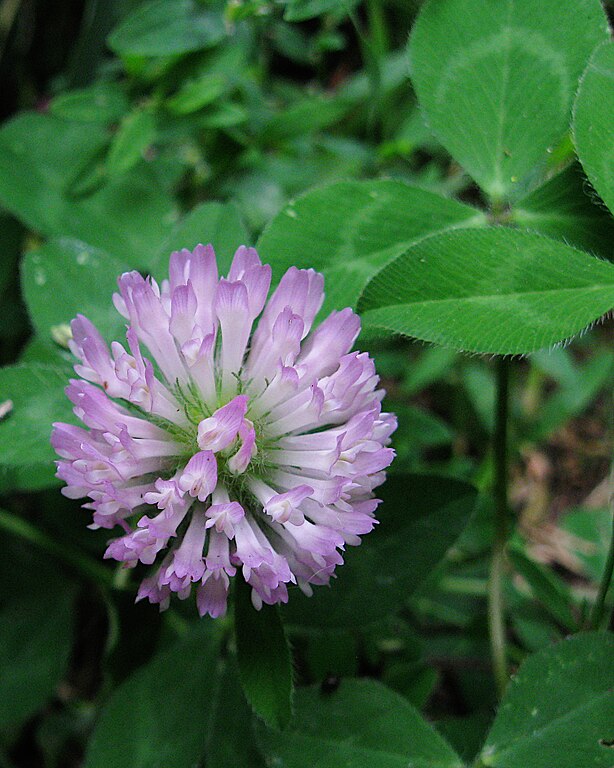
Family Leguminosae or Fabaceae.
This ubiquitous European import grows almost anywhere the grass isn’t mowed too frequently. It came to America as a pasture crop, and soon found that it really liked our open spaces. The leaves usually show a chevron pattern, which distinguishes it from the similar but rarer Alsike Clover (Trifolium hybridum). Red Clover keeps blooming throughout the season; the flower head above was blooming in Beechview in the middle of September.


Gray describes the genus and the species:
TRIFOLIUM [Tourn.] L. CLOVER. TREFOIL
Calyx persistent, 5-cleft, the teeth usually
bristle-form. Corolla mostly withering or persistent;
the claws of all the petals, or of all except the
oblong or ovate standard, more or less united below
with the stamen-tube; keel short and obtuse. Tenth
stamen more or less separate. Pods small and
membranous, often included in the calyx, 1-6-seeded,
indehiscent, or opening by one of the sutures. Tufted
or diffuse herbs. Leaves mostly palmately (sometimes
pinnately) 3-foliolate; leaflets usually toothed.
Stipules united with the petiole. Flowers in heads or
spikes. (Name from tres, three, and folium, a leaf.)
T. PRATENSE L. (RED C.) Perennial; stems ascending,
somewhat hairy; leaflets oval or obovate, often
notched at the end and marked on the upper side with a
pale spot; stipules broad, bristle-pointed; heads
ovoid, sessile or not rarely pedunculate; corolla
magenta to whitish; calyx soft-hairy. Fields and
meadows; extensively cultivated. (Introd. from Eu.)